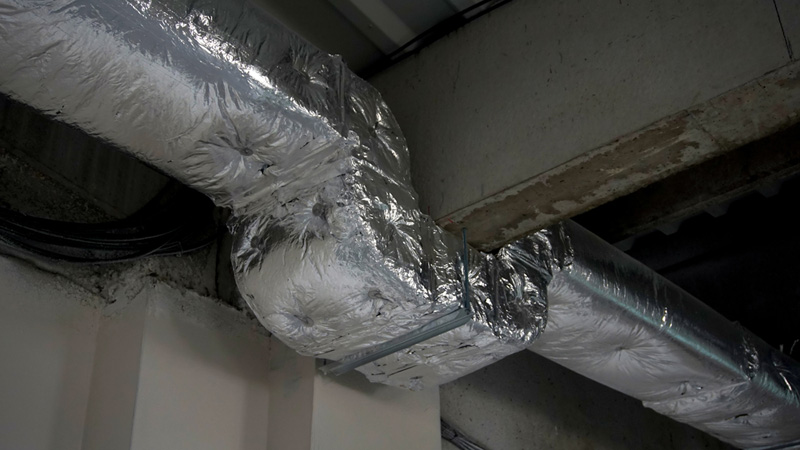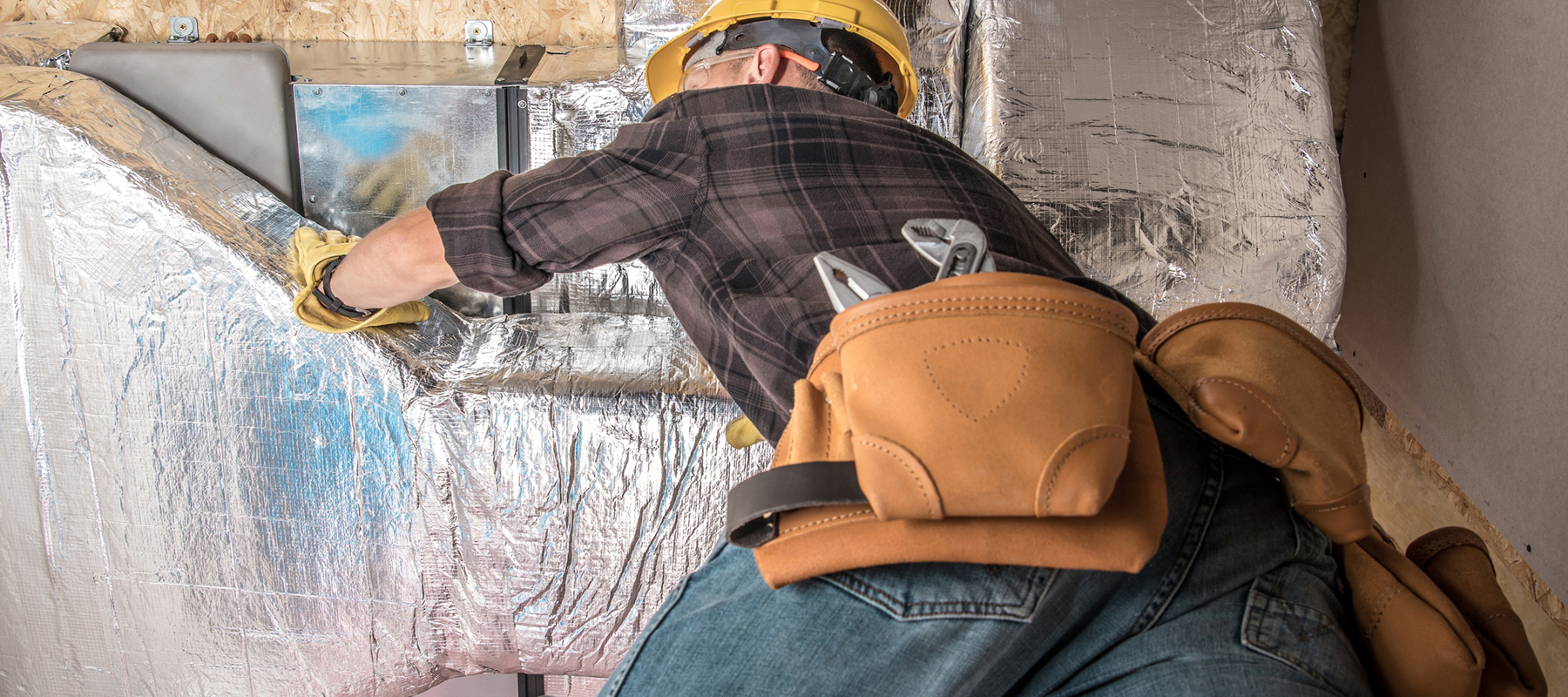Can Your Existing Ductwork Support a New Central Air System?
Last Updated: December 15, 2023

Fact Checked By: Ryan Maguire
On This Page
Installing a central air system is a great way to beat the heat and ride out the summer.
But there are those who worry about the complexity and expense of the task, as well as whether their home can support a central air system.
The truth is, central air is suitable for the majority of homes (even those without existing ductwork).
And, though not exactly cheap, central air installation costs about the same as most other remodeling projects.
In addition, when it comes time to sell your home, you can expect to recoup most of these costs.
How Do I Know if I Can Use My Existing Ductwork for Central Air? #
When installing central air conditioning, using your existing ductwork for airflow distribution can save $1,000s in project costs by avoiding the full expense of installing an entirely new duct system. But how do you know if your current ductwork is suitable?
Here are the key things HVAC contractors evaluate:
- Duct Type - Flexible round metal ducts work best. Inadequately sized duct board may need replacing.
- Duct Condition - Old, leaky ducts waste cooled air. Test for leaks and insulation damage.
- System Size - Are duct diameters and CFM flows adequate for a new unit's capacity?
- How Extensive Changes Are - Minor route changes may be viable. Full layout changes often mean new ducts.
- Accessibility - Can ducts be accessed to add/modify return air runs? Limited access adds costs.
An HVAC load calculation based on home size, layout and features determines necessary system capacity and duct requirements. Changing duct size, route, leakage or insulation levels impacts this.
For the best central AC efficiency and airflow, your contractor may recommend selective duct improvements or full replacement despite potentially higher costs. Evaluate options to fit your budget.

Replacing Your Ductwork #
If your existing ductwork can't be modified, new ducts and vents must be installed to ensure the air conditioner has a proper flow system.
This is best left to a professional, as the process is highly labor intensive and requires cutting into the ceilings, floors, and walls of your home.
Most retrofitted AC systems have the fan-and-coil unit mounted in the attic, so supply and return ducts must be run to ceiling registers in the first and second floor.
Generally, ducts that feed into second floor rooms run across the floor of the attic and down between the attic floor joists into ceiling registers.
For first floor rooms, ducts run through closets on the second floor whenever possible.
You may fear that running ducts through a closet will take up most of the available space. Actually, ductwork takes up very little space.
Some contractors propose using flex duct to save space, as it is a smaller and more flexible option than traditional rigid square ducts.
However, if it's a closet you use, avoid the flex duct option. It is easily punctured and has lower durability.
Ductwork Replacement Cost vs Using Existing Ductwork for AC #
Installing new ductwork for central air conditioning costs significantly more than trying to use your existing ducts. But how much can you save by keeping your current duct system?
New Ductwork System Cost
- Full install of an all-new duct system: $8,000 to $16,000
- Insulated flexible round metal ducts
- Custom designed and sized for optimal HVAC performance
Rework Existing Ductwork
- Minor changes to route, registers, returns: $500 to $2,000
- Test for leaks, insulation and size
- Alter layout to work with new AC system
Savings Amount
Homeowners can save $6,000 to $14,000 or more by having their existing ductwork modified vs a full replacement. Evaluate your duct condition and get professional guidance on any necessary changes.
Even investing $2,000 to reseal, reroute and tweak your ducts to work with a new AC system will save $1,000s long term. Just ensure your contractor confirms it will properly support your new HVAC system capacity before assuming existing ducts will suffice.
Real-World Central Air Installation Costs: Existing Ductwork vs New #
Here are some real-world quotes from homeowners on central air installation costs using existing ductwork vs installing a brand new duct system:
"I used my existing ductwork and added a 14 SEER Rheem AC system for $4,100." - James T., Ohio
"My ductwork was old and leaky. I opted to install all new insulated ducts with my Carrier AC unit for a total cost of $9,800." - Anne B., Illinois
"My home's ductwork was only 10 years old so I had my Trane XL18i AC installed using the existing ducts for $6,300." - Kevin R., Iowa
"Half my ductwork needed replacing so I invested in new ducts for the unfinished half along with my AC for $7,900 total." - Olivia S., Indiana
"My contractor confirmed my ducts could support a new AC unit. With a new Trane S-Series outdoor unit, the project was just $5,200." - Noah P., Michigan
"I decided to play it safe and install all new ducts with my Mitsubishi Hyper Heat AC system for $10,300 total." - Emma C., Wisconsin
As you can see, using suitable existing ductwork can save $3,000 to $8,000 or more compared to installing all-new ductwork. Evaluate your current ducts carefully with an HVAC pro before deciding.
How to Save Money on Your Central Air Installation #
Again, installing air conditioning in your home is a relatively expensive project, but there are some ways to save money overall.
First, have a professional handle the initial assessment to ensure the air conditioning unit you choose is the right size. In addition to calculating heat load, they'll look at factors such as the size of your home, insulation, and the number of windows you have.
This keeps you from getting a unit that is too big and costs more to operate, but also from getting a unit that is too small and doesn't cool your home properly (and burns out early).
Don't be afraid to shop around either. Many people choose the first contractor they talk to, but looking at other options is a good idea.
Costs and level of service vary from contractor to contractor and you can make a more informed decision when you've reviewed proposals from multiple vendors.
It is also a good idea to schedule your installation during the cooler months. In the summer, contractors are often overloaded with work and prices tend to increase.
But when it's cooler, their schedules are more open and prices are usually lower.
